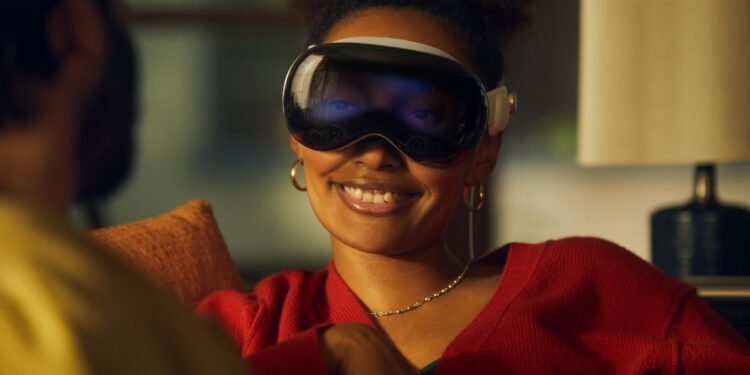With its Vision Pro headset, Apple has introduced a highly acclaimed product in the field of augmented reality (AR) and spatial computing. The headset promises an innovative experience and is equipped with high-quality technology. However, many users were also interested in the prospect of a more affordable version of the device. According to information from the well-known analyst Ming-Chi Kuo, the launch of a cheaper "Apple Vision" headset will not take place in 2025 as originally planned, but probably only after 2027.
The idea of a cheaper "Apple Vision" headset sounded revolutionary to many fans: A more attractively priced model could have made spatial computing accessible to a wider market. But now this launch has been delayed, which raises questions about Apple's strategy. Why was the release postponed? What reasons could Apple have for this decision? And what does this mean for the future of augmented reality technology and Apple Vision Pro?
What is known about the cheaper “Apple Vision” headset?
Rumors suggested that Apple was working on a lower-cost version of the Apple Vision headset that would lower the price by using cheaper materials and lower-resolution displays. Originally planned for 2025, this model would not have supported features like "EyeSight" - Apple's trademark for displaying information right in front of the user's eyes - in order to keep manufacturing costs low. The idea behind it: By making the headset more affordable, more users could have access to AR technology and become familiar with spatial computing. This would potentially have allowed Apple to tap into a wider market and further distribute visionOS, the operating system for AR and VR.
Why is the cheaper model being delayed?
According to Kuo, Apple has postponed plans for the cheaper version of the “Apple Vision” headset for strategic reasons coveredThe delay beyond 2027 could indicate that Apple is hesitant to launch a low-cost model before it has gained sufficient experience with the premium product. One of the possible considerations: a cheaper headset might not necessarily generate more interest in visionOS and AR. Kuo compares this to the HomePod mini - a cheaper product that offers the functionality of the original HomePod but still failed to gain much market acceptance.
HomePod mini as an example: price and market acceptance in comparison
The HomePod mini only moderately increased sales of Apple's smart speakers, showing that a low price alone is not enough to make a product a mass phenomenon. Apparently, Apple believes that offering a $2,000 headset would not necessarily expand the reach of visionOS. Instead, the company could focus on appealing to a more demanding group of customers willing to pay more for a fully immersive and high-quality AR experience.
New version of the Apple Vision Pro with M5 chip in the works
Despite the postponement of the cheaper model, Kuo said Apple is still working on a new version of the Apple Vision Pro, which is expected to be released next year. This will be equipped with a more powerful M5 chip and offer improved integration of "Apple Intelligence". The M5 chip, which is a significant development of the previous M2 chip in the Vision Pro, is intended to make the device even more powerful and take the AR experience to a new level. It remains unclear whether there will be additional hardware upgrades that could significantly differentiate the new model from the current version.
visionOS and the reach of augmented reality
visionOS, the operating system for the Apple Vision headset, plays a central role in Apple's AR strategy. Apple has developed a comprehensive system for augmented and virtual reality that could potentially be used for a wide range of applications - from productivity to entertainment to education. By introducing a cheaper headset more widely, visionOS could theoretically be established more quickly and widely. But Apple's decision not to launch the cheaper headset immediately could indicate that they want to establish visionOS in a smaller but affluent market first before making it more widely available. This could have the advantage of giving Apple enough time to evaluate the feedback from the first group of users and further improve visionOS before it goes to the masses. This way, Apple can ensure that visionOS and its applications meet the high expectations that users have of Apple products.
Postponement of the cheaper Apple Vision: Strategy instead of speed
Apple's decision to postpone the cheaper "Apple Vision" headset indefinitely shows that the company is taking a strategically cautious approach to introducing new technologies. Instead of launching a low-cost AR headset as quickly as possible, Apple is focusing on the premium model for now - the Apple Vision Pro. The reasons for this probably lie in the belief that a cheaper headset would not automatically lead to greater adoption of visionOS and spatial computing. For you as a potential user, this means that a cheaper model will probably not be available until after 2027. In the meantime, the Apple Vision Pro remains the preferred option for anyone willing to dig deep into their pockets for a comprehensive AR experience. (Image: Apple)
- Gurman: iOS 18.2 should be released a little earlier than usual
- Apple Vision Pro meets production goals despite challenges





